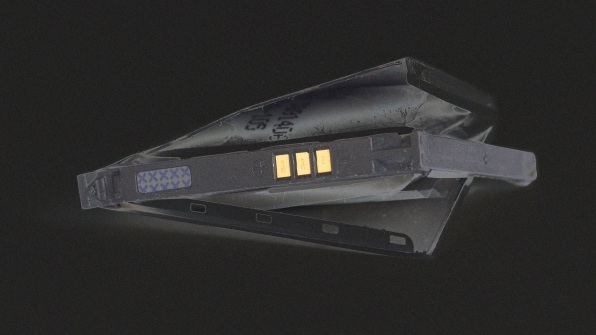Most of the world is betting on lithium-ion as the future of batteries–Elon Musk for one. When fully up and running in 2020, Tesla’s Gigafactory 1 is expected to churn out 50 million kilowatt hours of lithium-ion power packs a year–enough for plenty of Model 3s and home Powerwall storage units.
But not everyone shares the prevailing wisdom about lithium-ion. Bill Joy, for instance. The Sun Microsystems founder and Silicon Valley legend is betting on what he says is a cheaper, safer technology. It’s a solid-state alkaline battery that uses some of the same materials as everyday batteries, like those in flashlights and TV remotes. But it’s also rechargeable, making it suitable for uses like electric cars and power storage for grids and homes.
Lithium-ion batteries have the advantage of high energy density, relatively low weight, and that they retain power after being recharged hundreds of times. Moreover, as they’ve become the default for electric vehicles and cell phones, their cost has fallen by at least 73% in seven years. But Joy argues that lithium-ion will remain relatively expensive in the long term because they’re made with relatively rare metals like nickel, cobalt, and lithium.

What’s more, lithium-ion has the occasional, though not negligible, tendency to catch fire. The batteries can short and overheat because of minute faults in the manufacturing process (for example, faults in separators that keep chemicals in the cells apart), or because of mishandling during transport. Airlines continue to discourage passengers from putting lithium-ion batteries into aircraft holds, lest they burn up.
Last year, Samsung was forced to recall more than 1 million Galaxy Note 7 smartphone batteries amid safety fears. And lithium-ion will explode if you poke it with a stick or another sharp object. “If you puncture [a lithium-ion] battery and create a short, it will catch on fire and create a really violent fire that you can’t put out with a normal extinguisher,” Joy says.
Joy does, of course, have an interest in pushing the explosive qualities of lithium batteries: He has invested in a company called Ionic Materials, which uses a plastic-like polymer for its electrolyte. While still five years away from coming to market, it appears to be safer than lithium-ion, which have liquid electrolytes. A promotional video for Ionic shows its batteries keep working even after someone fires bullets directly into the surface.
Ionic’s polymer works with standard battery chemicals like zinc and manganese dioxide, which are more abundant than the material used for lithium-ion. And, it can be molded into different shapes. Joy says the electrolyte can be combined with a standard cathode and anode material, like zinc and manganese dioxide, and rolled into a plastic sheet like Saran Wrap. That means the batteries could potentially be arranged around a car–perhaps in the floor or roof–instead of always in metal housing under the hood, as with electric cars today.
The polymer was invented by Mike Zimmerman, a materials scientist. Joy invested in the company after being referred to Zimmerman by a friend. He says it jibed with a long-running goal–first made while he was a venture capitalist with Kleiner, Perkins, Caufield and Byers (KPCB)–to find a better battery.
“We can fix lithium-ion to be safe and do all the advanced things people want to do. But we can also make [alkaline batteries that are] cheaper and safer and simple to manufacture, and make them rechargeable,” Joy says. He estimates that his rechargeable alkaline battery, while less powerful than a lithium-ion battery, will have a tenth of the material costs.
Battery startups are notoriously hard to get right, however. Several big names have closed in recent years, having once championed technology that was going to revolutionize the world. Just in the last few months, Acqion, a hot company with funding from Bill Gates and KPCB, sought bankruptcy protection. “Creating a new electrochemistry and an associated battery platform at commercial scale is extremely complex, time-consuming, and very capital-intensive,” said CEO Scott Pearson after ploughing through $190 million of other people’s cash.
There are lots of other battery technologies under development, including magnesium-ion, sodium-ion, and lithium-sulfur, and none of them have made it to the productive end of the “Hype Cycle”–the process by which new technology goes mainstream. But Joy is confident that Ionic can move more quickly and safely than other companies. For one, using a solid-state polymer instead of a liquid electrolyte reduces the risk of unwanted chemical reactions, including slivers of lithium (“dendrites”) that can build up inside lithium-ion cells and cause fires. For another, Ionic doesn’t plan to do its own manufacturing. It wants to license its engineering to existing battery makers as well as auto-supply companies, and others.
That should help cut costs and reduce the risk of failure, but it’s going to be a hard road. Lithium-ion may not be perfect. But Elon Musk and others are already at the factory-christening stage, creating momentum that will be difficult to repulse. “The majority of rechargeable batteries will ultimately be alkaline, but it’s going to take years before we build new factories and supply chains and turn the ship around,” Joy says.
(52)